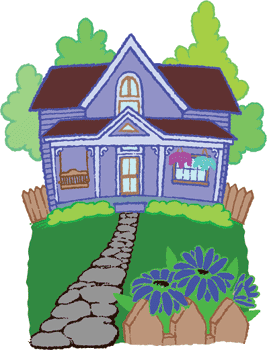Introducing the Montessori Method
By Kathy von Duyke
Printed in Practical Homeschooling #41, 2001.
 The philosophy behind this child-friendly method, and some practical tips on how to make it work in your home.
The philosophy behind this child-friendly method, and some practical tips on how to make it work in your home.

|
 |
 The family is meant to be a place of grace. We were created to interact heart to heart, and mind to mind, knowing each other, caring about each other, being involved and encouraging one another. Authority is used to bring up and nurture and support the weak among us, our children. Weakness may be in many forms - this one is undisciplined, that one is fearful; one struggles with math, that one isn't ready to read. But how to create a home environment that allows such beauty to unfold among the members within? And how does one do this in the swing between rigidly disciplined lessons with accountability, and child-led studies that perhaps leaves a parent breathless trying to give such freedom to a houseful of children?
The family is meant to be a place of grace. We were created to interact heart to heart, and mind to mind, knowing each other, caring about each other, being involved and encouraging one another. Authority is used to bring up and nurture and support the weak among us, our children. Weakness may be in many forms - this one is undisciplined, that one is fearful; one struggles with math, that one isn't ready to read. But how to create a home environment that allows such beauty to unfold among the members within? And how does one do this in the swing between rigidly disciplined lessons with accountability, and child-led studies that perhaps leaves a parent breathless trying to give such freedom to a houseful of children?
Enter the "prepared environment" of the Montessori Method. It is both child-directed and yet within loving adult parent directed preparation. Almost like our loving God who has set out treasures of wisdom for us to hunt and delight in. It was this attribute of God which first drew me to the KONOS curriculum years ago. I find that all of my favorite homeschool resources would work well and perhaps even better within a prepared environment and in the context of the Montessori teaching methods.
In this method, developed early this century by Italian doctor Maria Montessori, lessons are presented in three periods. Information is presented, practiced, and finally checked for mastery, all with attention to the dignity and intrinsic desire to learn within a child.
Hands-On First
Dr. Montessori researched and found that all children learn through their hands first. In fact, she concluded that children needed sensorial training (senses). She developed many beautiful, clever materials that are tactically satisfying and allow for exploration and development of the senses. This attention to the senses is then incorporated into higher learning. For example, a child builds multiplication tables through the use of an attractive wooden set of counters and a board. Through the use of satisfying touch and hands-on patterning a very young child can build a mental pattern for mathematics.
Practical Life Training
As homeschoolers, we love a strong focus on practical life training. The Montessori method developed a whole curriculum around this goal. Practical Life Training has brought a much greater sense of order and peace in our school day. The repeated practice of useful tasks is very engaging to young children, absorbing their concentration, training them in independence, and modeling how to perform family tasks making them both a delight and a help.
I had initially assumed I could do this training at chore times, but many of those tasks needed to be broken down and practiced in much smaller pieces. In one activity I created for my two-year-old, Heidi, I cut a hole in a large plastic bin top and seated a plastic bowl down into it. I filled the bowl with kidney beans, adding a scoop and six plastic cups around the perimeter of the bin. After demonstrating to her how to pour over the middle of the bowl into the middle of the cup, and later carefully pour back into the bowl and clean up her spills, I let her have a go. I was moved by the level of intense focus she applied to her task and the length of time she spent working to perfect her ability to scoop and fill and pour. In time she will easily pour her own cups of milk without a spill.
Preparing a Neat Environment
On one of the first days of school I demonstrate how to take a rug, unfold it and lay it out. I will choose an activity from the shelf and bring it to my rug. Materials are laid out left to right and bottom to top in order of difficulty on the shelves. Children are encouraged to work a shelf in this fashion so that they build each small skill upon the preceding one. When I am finished, I will put the activity back in its original form and place it back on the shelf.
Neatness, order, thoughtfulness towards others, and grace are incorporated into each activity. If only they would do this with the toilet paper role, right? Using the rugs helps children define their space. This keeps them from worrying about encroachment and from encroaching on others. In fact, this is one of the first ways we teach them to love our neighbor as ourselves.
Obviously setting up such carefully prepared materials in a home environment takes time, and a curious one-year-old can unshelve it mighty quickly. Justin (8 months) was allowed to play in the bean bowl with the cups, but each time his father popped his head in the room, he would become startled and toss the cup of beans over his shoulder and all over the floor. While this was cute, he didn't have the skill to clean it up and it wouldn't be a safe play area apart from my careful attending. So Tim hinged two long, low purchased bookcases that had backs. He set casters under them and a lock on the outside. With this set up, I can carefully lay out several weeks worth of materials, and lock it up at the end of our school day. This leaves the room free for later play without over use or abuse of the materials.
With a prepared environment, meaningful and engaging activities, some beautiful violin pieces or Irish harp in the back ground, and a clear set of expectations for school age children, we have experienced some incredibly peaceful and productive school days.